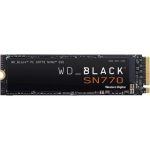The strategies and dynamics of the combat scenarios have been changing over time. And there is no doubt that the technology has played a significant role in this evolutionary path with the provision of new weapons and vehicles. However, there is a premise that does not seem to lose its validity, at least for now: that in any confrontation it is better to go unnoticed.
In the naval world, more specifically in submarines, we find a clear example of this reality. These are ships capable of submerging and, thanks to their sophisticated technology, of being practically undetectable, which translates into high stealth and great maneuvering capabilities. The boats, however, are still far from achieving these qualities.
In search of quieter warships
While ships may never be able to reduce their acoustic signature to the point of being virtually undetectable, it is possible to lower their exposure level by implementing new propulsion systems. At least this is what DARPA believes, according to the BBC. The dependent agency of the Department of Defense of the United States is involved in a project that points in that direction.
The idea he pursues, however, is not completely new and dates back more than half a century. It is a propulsion system known as magnetohydrodynamic. It differs from conventional proposals because it has no moving parts. There are no driveshafts, propellers and other components that, by churning up the water, could reveal the ship’s location to an enemy vessel that may be using passive sonar.
The magnetohydrodynamic system is based on the Lorentz force, that is, the force exerted by electric and magnetic fields on an electric charge. Without going into technical details, acceleration using a magnetic field of a fluid such as salt water allows the boat in question to be pushed in the opposite direction. On paper this is promising, but it also has its drawbacks.
DARPA’s main building
A series of tests carried out in the 1990s by the Japan Ship and Ocean Foundation with a small ship called Yamato-1 it made it clear that the system was far from efficient. It required too much energy and moved extremely slowly. In addition, he needed much stronger magnets and more durable electrodes.
Years have passed and, according to DARPA, we already have more powerful images. However, the obstacle of the electrodes is still present. These elements face a major wear during its use, so it is necessary to contemplate new types of materials that, in addition to being more resistant, support high intensities of electric current.
But this is not all. The system, although it has proven to be functional, still has a major drawback that needs to be addressed before its future implementation on military ships. Turns out it’s not as quiet as you’d expect. It is that when you drive the boat, bubbles are created that generate resistance, reduce efficiency and, as if that were not enough, cause noise that translates into a detectable signature.

At DARPA, however, they are optimistic and are already working to address these issues. As of next year they will begin to test new materials and will dedicate 18 months to design, manufacture and test the first unit with magnetohydrodynamic propulsion. The objective that the prototype must overcome will be to achieve a performance equivalent to existing propeller systems. With time we will know if he will succeed.
Images: Bing Image Creator | Ajay Suresh
In Xataka: We have always had oil tankers and methane tankers. Now we have X: it literally carries electricity













